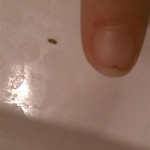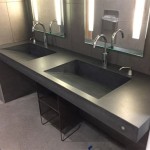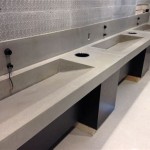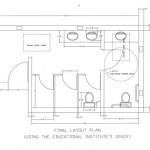How To Change Bathroom Halogen Light Bulbs
Changing a halogen light bulb in a bathroom presents a relatively simple task but demands precision and adherence to safety guidelines. Understanding the characteristics of halogen bulbs, employing the correct tools, and following a step-by-step process ensures a successful replacement without causing damage or injury. This article provides a comprehensive guide to changing bathroom halogen light bulbs, outlining the necessary precautions and procedures to ensure a smooth and safe process.
Halogen light bulbs, prized for their bright, white light and compact size, are commonly found in bathroom fixtures, particularly in vanity lighting and spotlights. These bulbs differ fundamentally from incandescent bulbs; they contain a halogen gas (usually iodine or bromine) that recycles tungsten vapor back onto the filament, extending the bulb's lifespan and maintaining light quality. While generally more efficient than traditional incandescent bulbs, halogen bulbs still produce considerable heat, making careful handling essential to avoid burns and prevent potential fire hazards.
Before embarking on the replacement process, it is crucial to gather the required tools and materials. This ensures a seamless workflow and minimizes any potential interruptions. Essential items include:
- Replacement Halogen Bulb: The most critical item is the correct replacement bulb. Identify the bulb type (e.g., MR16, G9, GU10) and wattage printed on the existing bulb before purchasing a replacement. Using the incorrect bulb type can lead to incompatibility or damage to the fixture.
- Gloves: Wearing gloves, preferably cotton or nitrile, is essential. This prevents oil from the skin from transferring to the new bulb. Oil contamination can cause the halogen bulb to overheat and prematurely fail.
- Safety Glasses: Safety glasses provide crucial protection from potential bulb shattering during removal or installation.
- Step Ladder or Sturdy Chair: If the light fixture is located at a height that is not easily accessible, a stable step ladder or chair is necessary to reach the bulb safely.
- Bulb Removal Tool (Optional): For some bulb types, particularly GU10, a bulb removal tool can simplify the process. These tools feature suction cups or grips to facilitate a safe and secure removal.
- Screwdriver (May be Required): Some light fixtures feature screws that secure the bulb housing. A screwdriver of the appropriate type (Phillips head or flathead) may be needed for access.
With all materials prepared, the next step involves carefully removing the old halogen bulb. This procedure must be undertaken with caution to prevent burns or injuries from handling a potentially hot bulb.
Preparation and Safety Precautions
Prioritizing safety is paramount when working with electrical components. Before commencing any work, ensure the electrical circuit supplying the bathroom light fixture is completely de-energized. This can be achieved by switching off the corresponding circuit breaker in the main electrical panel. Confirm that the power is off by testing the light switch; the light should not illuminate when the switch is flipped.
Allow sufficient time for the old halogen bulb to cool down completely before attempting to remove it. Halogen bulbs operate at high temperatures, and touching a hot bulb can cause severe burns. Waiting at least 15 to 30 minutes after switching off the light is generally recommended.
Wearing safety glasses and gloves is mandatory throughout the replacement process. The safety glasses protect the eyes from potential glass shards if the bulb breaks, while the gloves prevent oil contamination of the new bulb and provide a barrier against potential electrical shock from residual current, even after the circuit breaker has been switched off.
Removing the Old Halogen Bulb
The removal method varies depending on the type of halogen bulb and the design of the light fixture. Common types include MR16, G9, and GU10. Each type utilizes a specific mechanism for securing the bulb within the fixture.
MR16 Bulbs: MR16 bulbs are typically held in place by a spring clip or retaining ring. To remove an MR16 bulb, gently pull the bulb straight down. In some cases, it may be necessary to carefully pry the retaining ring or spring clip away from the bulb using a small, non-conductive tool. Avoid applying excessive force, which can break the bulb.
G9 Bulbs: G9 bulbs feature a loop-shaped base that plugs directly into the socket. To remove a G9 bulb, gently rock the bulb back and forth while simultaneously pulling it straight out of the socket. Avoid pulling forcefully on one side, which can damage the bulb or the socket. A specialized G9 bulb removal tool can be helpful for securely gripping the bulb.
GU10 Bulbs: GU10 bulbs employ a twist-and-lock mechanism. To remove a GU10 bulb, grip the bulb firmly and twist it counterclockwise (usually about 90 degrees) until it releases from the socket. Then, gently pull the bulb straight down. Some GU10 fixtures may have a retaining ring that needs to be removed before twisting the bulb.
Dispose of the old halogen bulb responsibly. Halogen bulbs contain small amounts of mercury and should not be disposed of in regular trash. Check local regulations for proper disposal methods, which may involve recycling programs or hazardous waste collection facilities.
Installing the New Halogen Bulb
Before installing the new bulb, visually inspect the socket for any signs of damage or debris. If the socket appears damaged, it is crucial to consult a qualified electrician to repair or replace the socket before proceeding. Debris within the socket can prevent proper contact and cause the bulb to malfunction or overheat.
Handle the new halogen bulb with gloves at all times. Avoid touching the glass surface of the bulb with bare hands. Even a small amount of oil from the skin can create a hot spot on the bulb's surface, leading to premature failure. If the bulb is accidentally touched, clean it with a clean, lint-free cloth dampened with isopropyl alcohol.
The installation process mirrors the removal process, but in reverse. Ensure the correct orientation of the bulb before inserting it into the socket. For MR16 bulbs, align the bulb with the retaining ring or spring clip. For G9 bulbs, align the loops with the socket openings and gently push the bulb in. For GU10 bulbs, align the pins with the socket openings, push the bulb in, and twist it clockwise to lock it into place.
Once the new bulb is securely installed, carefully reinstall any retaining rings or covers that were removed during the bulb removal process. Ensure that all components are properly aligned and secured to prevent the bulb from dislodging or causing a safety hazard.
Testing and Final Steps
After installing the new halogen bulb and reassembling the light fixture, restore power to the circuit by switching the circuit breaker back on. Test the light by flipping the light switch. The new bulb should illuminate immediately and provide a bright, consistent light output.
If the new bulb does not illuminate, double-check that the bulb is securely seated in the socket and that the circuit breaker is fully engaged. If the problem persists, the bulb may be defective or there may be an issue with the light fixture itself. In such cases, consult a qualified electrician to diagnose and resolve the problem.
Observe the new bulb for a few minutes to ensure it is operating correctly. Check for any flickering, unusual noises, or signs of overheating. If any of these issues are observed, immediately switch off the light and consult a qualified electrician.
Proper disposal of the old halogen bulb is essential. As previously mentioned, halogen bulbs contain small amounts of mercury and should not be discarded in regular trash. Follow local regulations for proper disposal methods, which may involve recycling programs or hazardous waste collection facilities. Contact the local waste management authority for guidance on disposal options.
Troubleshooting Common Issues
Several common issues may arise during the halogen bulb replacement process. Understanding these issues and their potential solutions can help ensure a smooth and successful outcome.
Bulb Breaks During Removal: If the halogen bulb breaks during removal, carefully collect all glass shards using gloves and safety glasses. Use a vacuum cleaner to remove any remaining small fragments or dust. Dispose of the broken bulb and glass shards responsibly, following local regulations for hazardous waste disposal.
Bulb Will Not Release from Socket: If the bulb is stuck in the socket, avoid applying excessive force, which can damage the bulb or the socket. Try using a bulb removal tool or gently rocking the bulb back and forth while simultaneously pulling it out. If the bulb remains stuck, consult a qualified electrician for assistance.
New Bulb Does Not Illuminate: If the new bulb does not illuminate, double-check that the bulb is securely seated in the socket and that the circuit breaker is fully engaged. Also, verify that the replacement bulb is compatible with the light fixture. If the problem persists, the bulb may be defective or there may be an issue with the light fixture itself. In such cases, consult a qualified electrician to diagnose and resolve the problem. Check the voltage rating of the bulb to match the source voltage. Using an incompatible voltage rating could damage the bulb.
By following these guidelines, changing bathroom halogen light bulbs can be a safe and straightforward process. Taking the necessary precautions and adhering to proper procedures ensures a successful outcome and prevents potential hazards.

How To Replace Track Light Halogen Bulb Mr16

How To Change A Spotlight Bulb

How To Replace A Halogen Bulb Hunker

How To Change A 2 Pin Halogen Light Bulb Krm

Simple Ways To Change Halogen Light Bulbs 14 Steps

How To Remove Light Bulb Bunnings Work Community

How To Replace A Gu10 Bulb Led Hut

Downlight Stuck And Cannot Replace Bulb Diynot Forums

Light Bulbs Indoor Outdoor Electrical Lighting Wickes

The Most Common Light Bulb Questions A Faq Guide
Related Posts







